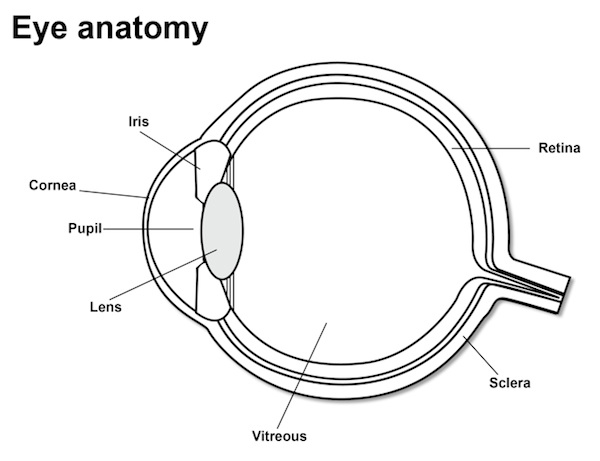Find out about different parts of the eye.

Basically, the role of the eye is to convert light into electrical signals called nerve impulses that the brain converts into images of our surroundings. Light rays pass through the pupil in the cornea.
Aqueous humour – maintains the pressure in your eye and nourishes the cornea and the lens by supplying amino acids and glucose, as well as vitamin C.
Choroid – a thin layer of blood vessels that nourish the retina and absorb scattered light.
Ciliary muscles – a circular muscle that relaxes or tightens to enable the lens to change shape for focusing.
Cornea – a clear covering on the front of your eye that focuses light entering the eye.
Fovea – a tiny pit in the macula that provides the sharp central vision that you need for activities, such as reading and driving.
Iris – the coloured part of your eye that regulates the amount of light entering.
Lens – the clear part of the eye behind the iris that helps to focus light, or an image, onto the retina.
Macula – the sensitive area in the centre of the retina responsible for what you see ahead of you (central vision).
Optic nerve – a bundle of more than one million nerve fibres that carries visual messages from the retina to the brain.
Pupil – this is the opening in the centre of the iris that lets in light. It is regulated by the iris.
Retina – the light-sensitive tissue lining at the back of your eye that converts light into electrical impulses that are sent along the optical nerve to the brain.
Sclera – also known as the white of your eye, this is the outer layer of the human eye.
Vitreous humour – a clear gel that fills the inside of the eye and helps it to retain its shape.
Tears have three main components; a watery component, an oily component and mucus. These create a film which covers the white of the eye and the cornea. A problem with any of the three layers may cause dry eye.